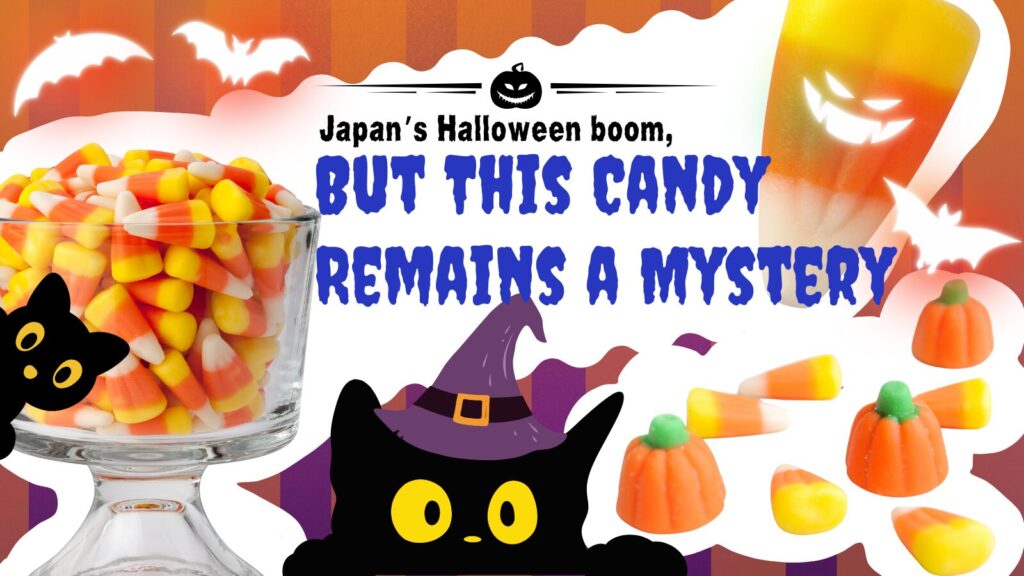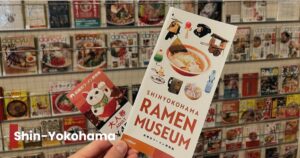Candy Corn: A Sweet Mystery in Japan
From Chicken Feed to Halloween Favorite
Candy corn – with its iconic tri-colored layers of white, orange, and yellow – is synonymous with Halloween in the U.S. Love it or hate it, it’s as much a part of the spooky season as jack-o’-lanterns and haunted houses. But here’s the curious part: despite Japan’s growing fascination with Halloween, candy corn hasn’t found its way into the mix of popular seasonal treats. So why has this beloved American candy yet to catch on in Japan?

The Humble Beginning of Candy Corn
Long before it became the poster candy for Halloween, candy corn had much more modest beginnings. Created in the 1880s by Philadelphia confectioner George Renninger, candy corn was originally sold as a fun, novelty candy shaped like kernels of chicken feed – a nod to its agricultural origins. Back then, it was a year-round treat marketed toward farmers. It wasn’t until the 1950s that candy corn was firmly linked to Halloween, thanks to clever marketing that played on its harvest colors and fall vibes.
So, Why Hasn’t Candy Corn Landed in Japan?
Despite Japan’s love for adopting foreign holidays like Halloween (and putting its own spin on them), candy corn has yet to carve out its place here. There are a few reasons why this sweet might be flying under the radar:
- A Sugary Overload? Japanese tastes tend to lean towards sweets with more subtle or refined flavors. Think matcha, anko (sweet red bean), and yuzu – all of which balance sweetness with complex undertones. Candy corn’s unapologetic sugary punch might be too simple and one-dimensional for local palates used to more nuanced treats.
- The Look: While candy corn’s three-color design is instantly recognizable to Americans, Japanese consumers might not be as charmed. Japanese sweets, often beautifully intricate and artfully crafted, appeal as much to the eye as to the taste buds. Candy corn, in contrast, might seem a little too basic and visually less striking compared to Japan’s delicate wagashi (traditional Japanese sweets).
- No Cultural Roots: Candy corn has deep cultural roots in the U.S., tied to the harvest season and Halloween nostalgia. In Japan, however, there’s no such connection. It doesn’t evoke memories of childhood Halloweens or fall festivals. Without that cultural anchor, candy corn remains just another foreign sweet that hasn’t quite made a splash.
Room for Candy Corn Innovation?
But all is not lost for candy corn in Japan. With the right approach, this Halloween staple could still find a niche. Imagine candy corn reimagined in Japanese-style desserts, perhaps as sprinkled over matcha parfaits? Its distinct colors could also lend themselves well to playful, Instagram-worthy dessert designs. Who knows? A fusion of candy corn with Japanese sweets could be the start of a unique trend.
Conclusion: A Sweet Future?
Candy corn’s journey in Japan may have yet to begin, but that doesn’t mean it doesn’t have potential. As Halloween grows ever more popular in Japan, with its love of cute (and sometimes quirky) seasonal treats, perhaps there’s a chance for candy corn to take root. In the meantime, it remains a curious reminder of how some sweets thrive across cultures, while others wait for their moment to shine.
Stay Updated with Tokyo Talk Labs! Our Monthly Newsletter include:
✨ Curated event highlights
🎉 Exclusive Tokyo quizzes
💡 Life hacks to make city living easier
🗞️ Fresh articles about Tokyo’s vibrant lifestyle
🇯🇵Sign up today and be part of our growing community of Tokyo explorers!🗼









Comments